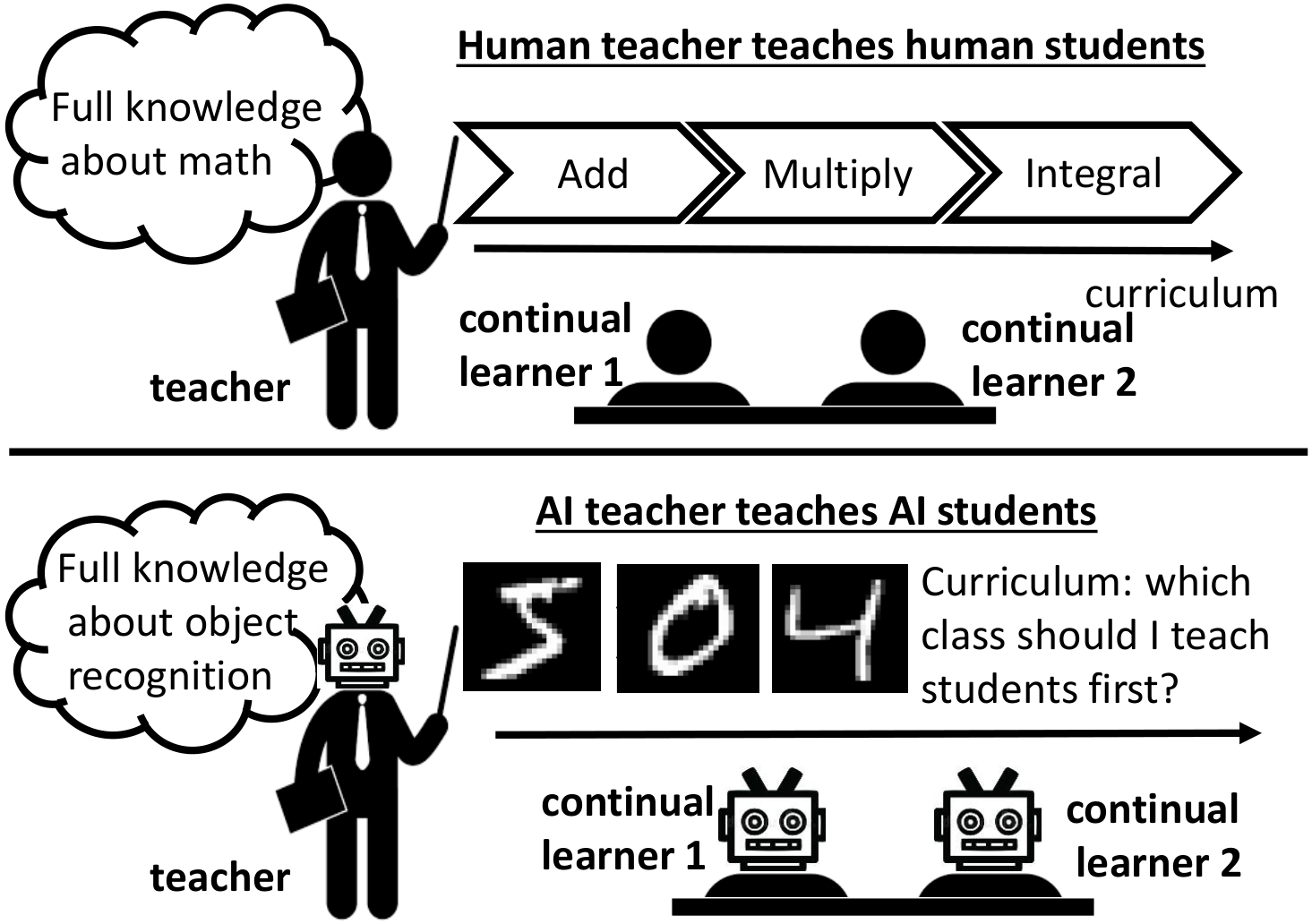Learning to Learn: How to Continuously Teach Humans and Machines
Curriculum design is a fundamental component of education. For example, when we learn mathematics at school, we build upon our knowledge of addition to learn multiplication. These and other concepts must be mastered before our first algebra lesson, which also reinforces our addition and multiplication skills. Designing a curriculum for teaching either a human or a machine shares the underlying goal of maximizing knowledge transfer from earlier to later tasks, while also minimizing forgetting of learned tasks. Prior research on curriculum design for image classification focuses on the ordering of training examples during a single offline task. Here, we investigate the effect of the order in which multiple distinct tasks are learned in a sequence. We focus on the online class-incremental continual learning setting, where algorithms or humans must learn image classes one at a time during a single pass through a dataset. We find that curriculum consistently influences learning outcomes for humans and for multiple continual machine learning algorithms across several benchmark datasets. We introduce a novel-object recognition dataset for human curriculum learning experiments and observe that curricula that are effective for humans are highly correlated with those that are effective for machines. As an initial step towards automated curriculum design for online class-incremental learning, we propose a novel algorithm, dubbed Curriculum Designer (CD), that designs and ranks curricula based on inter-class feature similarities. We find significant overlap between curricula that are empirically highly effective and those that are highly ranked by our CD. Our study establishes a framework for further research on teaching humans and machines to learn continuously using optimized curricula.
PDF Abstract ICCV 2023 PDF ICCV 2023 Abstract







 CIFAR-10
CIFAR-10
 ImageNet
ImageNet
 Fashion-MNIST
Fashion-MNIST